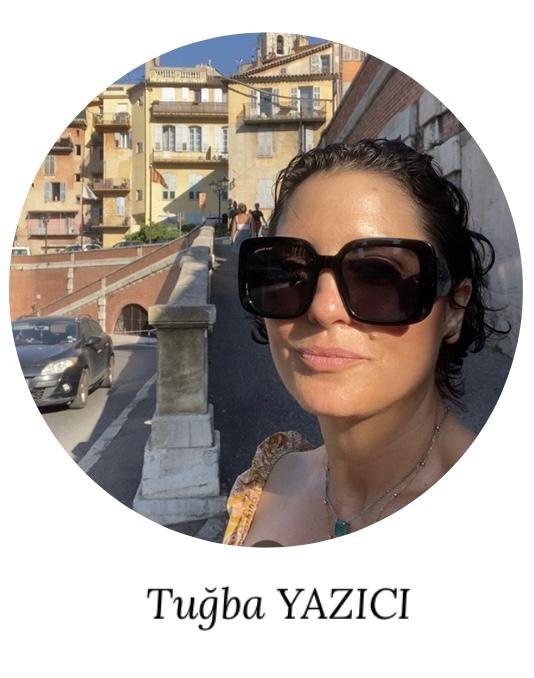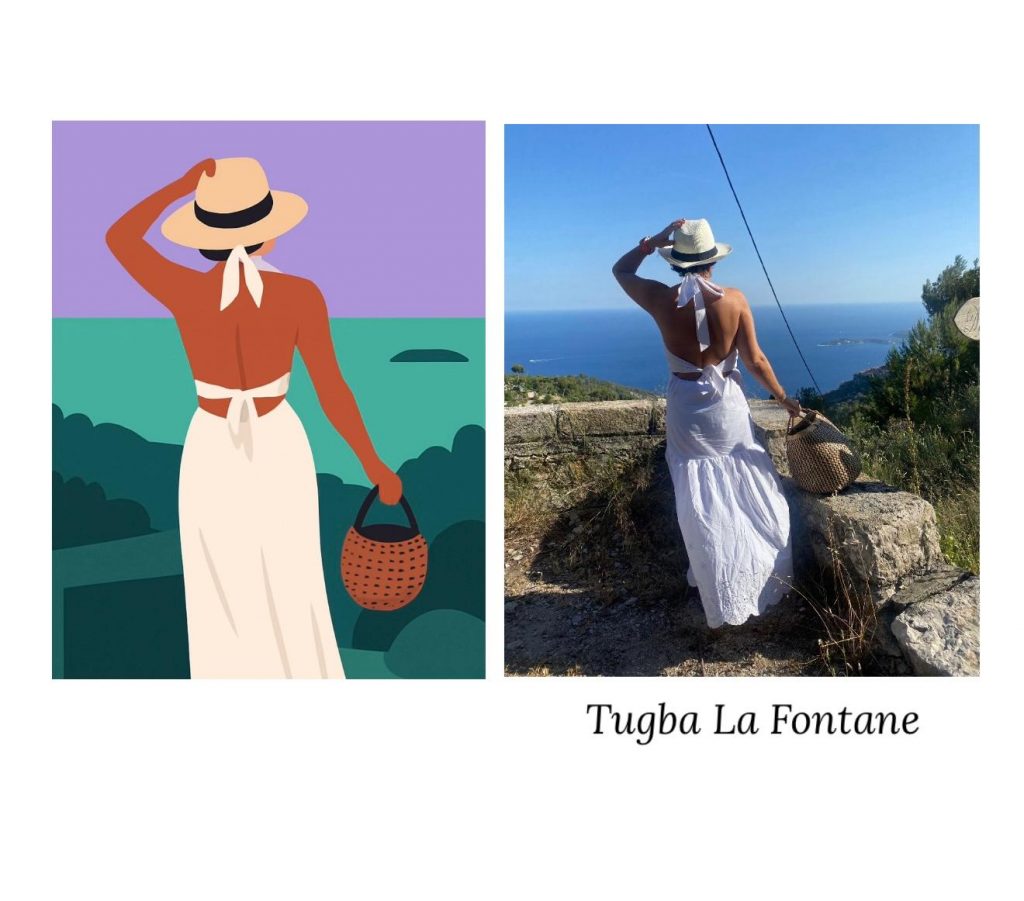
Sometimes… Something inside you is stirring but you cannot speak. Words are stuck in your throat. However, a voice inside you does not stop. It screams aloud… “Come on!” it says, “Tell me!” You keep quiet. It does not. Even if you speak, no one understands. Then one day that voice finds a way. Sometimes it becomes a painting, sometimes a sculpture… Moreover, sometimes it is so powerful that it explodes with the language of art!
Today, I will take you a little bit to that scream, to that sound… I mean to Picasso’s Les Demoiselles d’Avignon.
When you think of Avignon, what comes to mind…?

First stop: Avignon, a romantic medieval city in the lavender-scented Provence region of southern France. Oh, what a beautiful place! I went and toured many times…


Tugba YAZICI / South France
I even had the chance to see the castle in Antibes where Picasso lived for a while — it is now a museum. However, wait! This is not the “Avignon” which gave its name to that famous painting…
That painting… It actually takes place on a street called “Carrer d’Avinyó” in Barcelona. In addition, it is a striking painting that Picasso made in 1907, inspired by five women he saw in a brothel on that street:
The Demoiselles of Avignon
(Young Girls of Avignon)

MOMA/New York
When a person first see the picture will definitely ask themselves: “Are these women? Or are they masks?”
Five women are watching you with stern gazes. Nevertheless, such geometric forms, such broken facial features… It would be hard to understand if you did not tell them they were women. Why is this painting by Picasso important? Because it is one of the moments when Cubism was born. It is currently on display at MOMA in New York. However, interestingly, after painting this painting, Picasso never wanted to look at it again. Why?
Maybe, he painted the darkness inside him onto the canvas.
Although it is said that African masks inspired Picasso, I feel something else. I think this painting is an expression of his buried emotions, anger, fear and pain. Did the syphilis he suffered at the time trigger this outburst? Maybe, he painted those five prostitutes with masks as the ones responsible for his illness. Maybe… he saw the deterioration within himself in the faces in the brothel. He told it with masks because masks sometimes protect and sometimes hide. Maybe… this painting was a reckoning for Picasso… Such a deep confrontation that he never wanted to see it again. I understand Picasso! If I tried to draw five prostitutes or make no distinction between genders, or personalities that give the same feeling, I could not do it as is!
This is exactly what art is!
No matter what we experience, the enthusiasm, anger, passion, love… within us somehow seeps into what we do.
Let us come to a slightly different artistic journey:
La Fontaine!
(Alternatively, for me: La Fantone)
La Fontaine (1621-1695) was born in France, studied law, but his pen fell in love with animals. He made them talk. He described people. He built a whole philosophy with simple, understandable language. Who are his favorite characters? The fox, the wolf, the donkey, the lion and the rooster!

Moreover, let us listen to one of the most beautiful tales together:
The Wolf and the Dog Tale
While wandering around the mountains, about to starve to death, the wolf sees a plump, shiny-haired dog. Let us be honest, he thinks, “Should I eat this?” However, suddenly they start talking.
Dog: “You too can eat like me.”
Wolf: “What am I going to do about this?”
Dog: “You will wag your tail at the landlord, you will bark at the poor… Do you want a bone or a pat in return, we have it all!”
The wolf’s eyes shine, but one detail catches his attention: the mark left by the collar on dog’s neck.
“What is this?” he asks.
The dog evades it, but the wolf understands:
“So my dear, you can’t go anywhere…”
The wolf walks away without even looking back:
“Leave the meat and bones; I cannot give up my freedom!”
Now let us come to my comment:
Could there be a similarity between the meanings, La Fontaine attributes to animals and Picasso’s way of making their faces unrecognizable? Perhaps they both describe the same thing: Mankind! His darkness, contradiction, pain and search for freedom.
Moreover, as an artist, I followed the same path; of course, I also express my feelings with colors and lines.
I produced a series in 2017:
“Life is like a forest”
Manifesto:
“Life is like a forest; birds and snakes live in it…”
The most striking painting of the series: The Skeptical Woman
The question is:
“Are you a snake too?”
It was worked with mixed technique. It was exhibited many times in Boston. It entered collections in New York and Virginia. Moreover, because I advocate for “Portable Art”; scarf and pillow versions were produced.
Maybe right now, somewhere else in the world, a “skeptical woman” is watching someone with different variations on a couch.

Tugba Yazici / “Life is Like a Forest” series
If you are curious about my work:
You can reach me at www.tugbayazici.com.tr and at Istanbul Arnavutköy Art Gallery.
As I was finishing the article, I went back to my childhood. I remembered my mother and grandmother speaking in “bird language” so that we would not understand:
“Secen bece bice söğlicegem!”
They would sing like birds at home…
Now I ask you:
How do you express your emotions?
What do you do for yourself?
See you in the next art critiques…
Tugba Yazici
Multidisciplinary Artist & Producer



